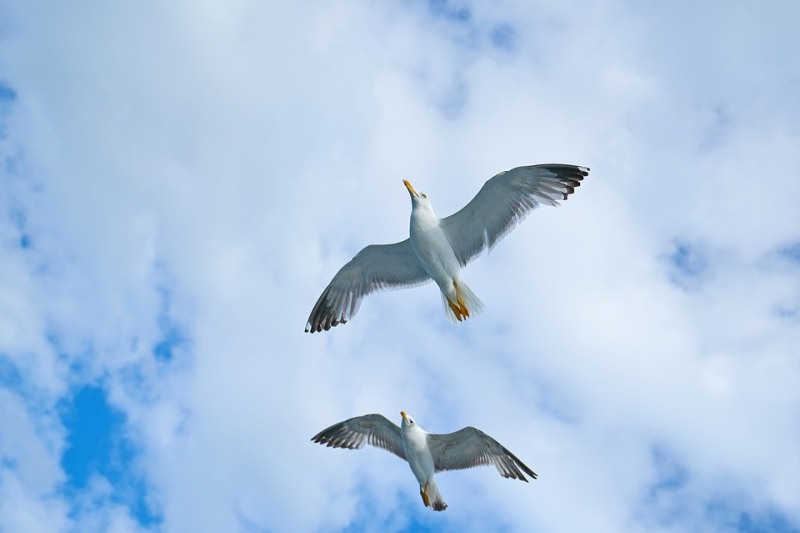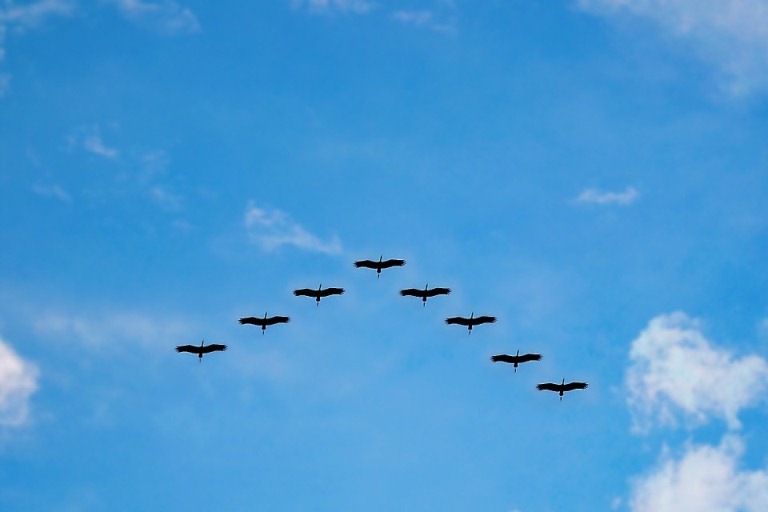Migrating birds – Travellers with wings
It’s not only humans but also animals and birds travel from place to place according to seasonal changes. Certain seasons only suit certain birds, and when season changes, the birds opt for another place with the same climatic conditions or habitat to live. Migrating birds have always caught the enthusiastic eyes of humans as they move in folk at regular intervals to a particular place and reach exactly at the same place same time next year. As they are ‘guests’ to an entirely new location, they receive warm welcome by spectators’ eyes.

Now also, when man uses maps and google maps to locate a place, with mind calculations the migrating birds reach the same location same season exactly next year. According to rough calculations around 1800 varieties of birds are long distant travellers which migrate every year. For many reasons birds travel from one place to another – in search of food and water, climatic changes and breeding.
They are never confused with paths
No one shows paths or directions to migrating birds. Yet they find their own way. It’s believed that nature and its geographical features like mountains, rivers and valleys help them to locate places easily. It’s also found that they depend on sun and stars also, to find their way.
According to some study reports certain hormonal factors also deeply influence their migration. A group of people says that they are able to identify the magnetic attraction of earth and that helps them not to be confused with their paths.
Some interesting facts
Treaties were also done between countries to protect migrating birds. Migratory Bird Treaty Act was formed in the year 1918. There exists some treaties to conserve African-European migrating birds.
Often migrating birds are caught and metal/plastic tags are tied in their legs. This technique known as ringing / banding is done to collect more information about these birds. But nowadays satellite mapping is used to know about their paths, food and life styles. Here transmitters are used for gathering information.
Now let me give a brief note on a few travellers

Siberian White Crane – This bird is one among the biggest flying birds of the world. In India it was seen for the last time in Kevaldev National Park of Rajasthan in 2002. According to 2010 statistics, only 3200 Siberian white crane are left.
Bar Headed Goose – They are able to fly 6000 metre high above the Himalayas. This goose can overcome severe cold and less oxygen conditions. They breed in central Asia and reach India through Himalayas during winter; they return back before March.
Bar Tailed Godwit – They own the credit of travelling across the seas without any rest. Their travel path has been located with the help of satellite mapping. From Alaska to New Zealand they travel continuously for 6-8 days to reach the destination. By this time they cover almost 11K kilometers. Yes, unbelievable!
Migrating birds that never fly – Emu and penguin fall under this group. They walk miles sometimes to get food.
Ruby Throated Humming Bird – They belong to the tiniest group of birds, they can travel backwards too. But you may wonder knowing these red throated tiny birds travel thousands of miles during migration. Some of them travel up to 620 kms across sea without rest. They migrate from North America to Central America and travel reverse also.
Arctic Tern – It is sea bird that holds the record of travelling maximum distance in life time. Each arctic tern travels more than 4000 kms every year. When summer ends in North Pole they travel towards South Pole. They lay eggs and breed in Arctic regions.
Challenges faced by these travellers

Birds travel from one place to another mainly due to non-availability of food and climate variations. But now, in the congested human world, most of them face problems with finding enough food. In the modern developed world big buildings and less greenery give them open challenges. High buildings distort their paths. Light houses at sea shores give dead notice to thousands of birds. Wild animals, wild cats, wandering dogs, storm, earth quakes, pollution etc give dead signals to them.
In short, whatever man has invented for his convenience is distorting the natural balance of the nature and its living hood. Perhaps after a few years we may keep waiting for our bird guests, but they never come! I just had this troubling thought.
Image source: Pixabay














Recent Comments